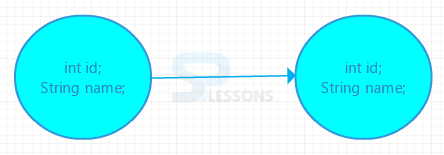 Description
Description
The functionality of Hibernate Joins is to read the data from multiple entities by using relationship and construct in a single select operation, then use the HQL Join statements. When constructing a joint statement, to the left side of the join, there should be relationship owner and right side of the join should be reference variable. HQL Joins are of 4 Types.
Inner join reads only equal data from both sides of the join statement. It is the by default join of Hibernate. Following is an example to perform inner join where a customer name and associated Item names use one-to-many relationship and apply between the Customer class and Item class.
[sql]select c.customerName, i.itemName from Customer c join c.items;[/sql]
In left join, even if there is equal data of the association and more data will be selected from left side of the join statement. Following is an query where a customer Name is selected, even though there are no items for that customer.
[sql]select c.customerName,i.itemName from Customer c left join c.items.[/sql]
In right join, even if there is equal data of the association and more data will be selected from right side of the join statement .
[sql]select c.customerName,i.itemName from Customer c right join c.items.[/sql]
In full join, both equal data and unequal data from both sides of the joints will be selected.
- right join/right outer join
- left join/left outer join
- inner join
- full join.
full join = left join + right join.
 Key Points
Key Points
- Hibernate Joins - HQL, Native SQL are used to perform join statements.
- Hibernate Joins - Full join is a combination of right and left joints.
- Hibernate Joins - Hibernate by default join is Inner join.




